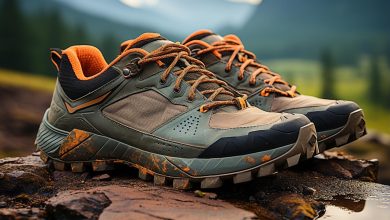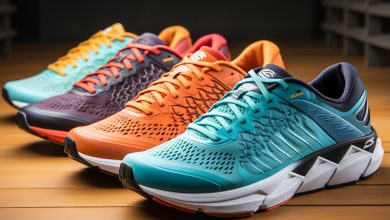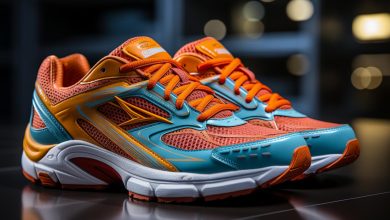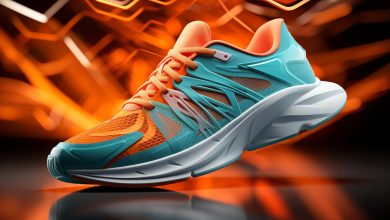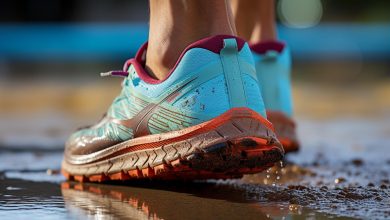Running Shoes for Overpronation: Finding the Perfect Fit
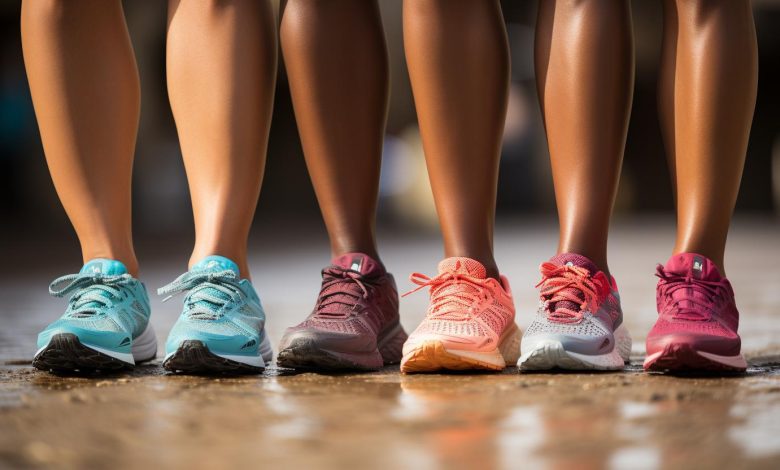
Imagine yourself running with the grace and ease of a gazelle, effortlessly gliding across the pavement. But if you suffer from overpronation, that perfect stride can feel like an uphill battle.
Fear not! In this article, we will guide you through the world of running shoes for overpronation, helping you find the perfect fit to support your feet and improve your performance.
So lace up your sneakers and let’s get started on this journey towards a smoother run!
Understanding Overpronation
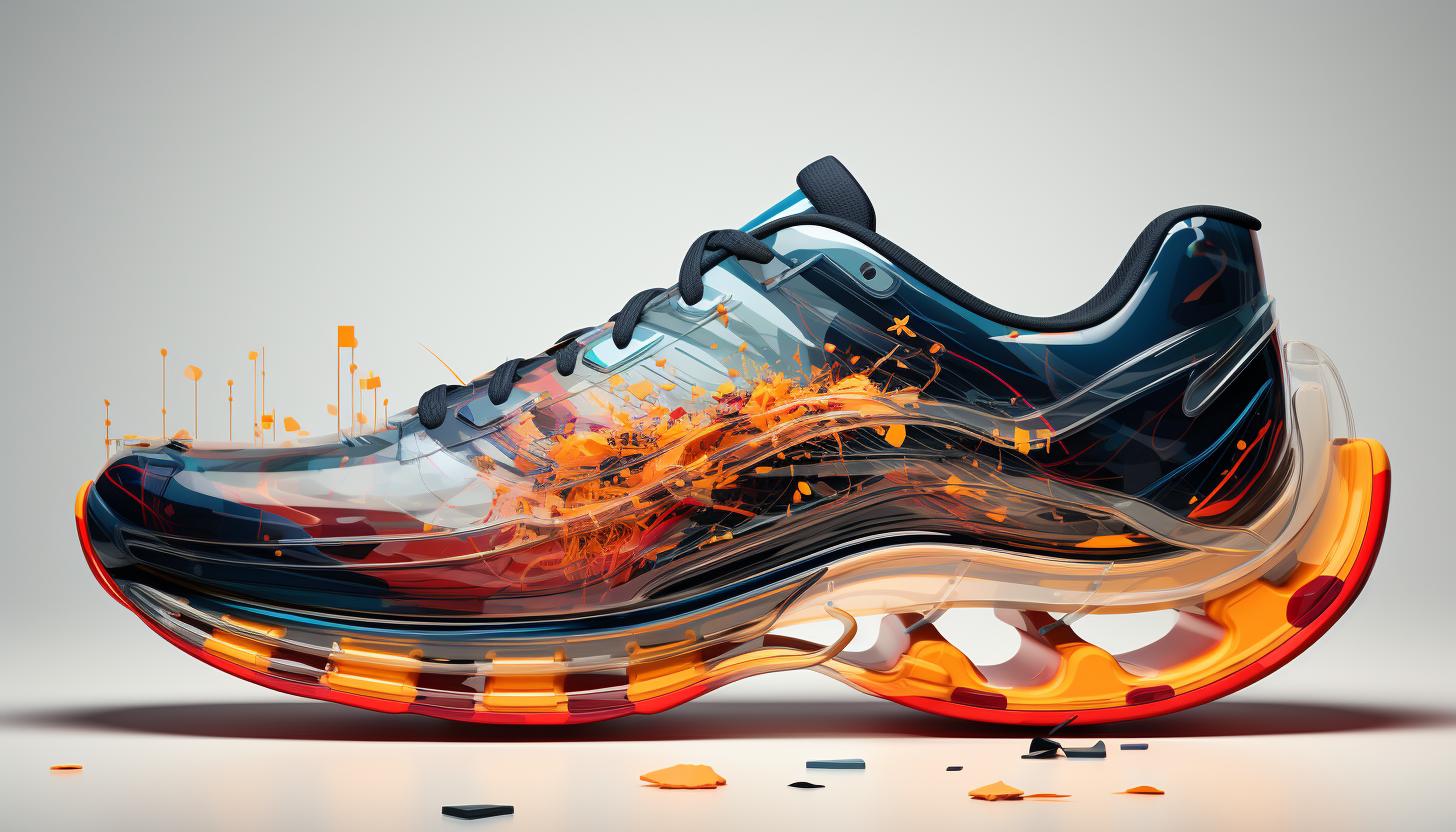
Overpronation occurs when your foot rolls inward excessively while walking or running. It is a common condition that affects many individuals, and understanding its causes and treatment options can help alleviate any discomfort or potential injuries.
There are several factors that can contribute to overpronation. One of the main causes is having flat feet or low arches, which can result in an increased inward rolling motion of the foot. Additionally, weak ankle muscles, tight calf muscles, or wearing shoes with inadequate support can also lead to overpronation.
Fortunately, there are various treatment options available for overpronation. The most effective approach is to wear supportive shoes specifically designed for this condition. Look for shoes with good arch support and firm heel counters to help stabilize your feet during movement. Orthotic inserts or custom-made orthotics can also provide additional support and correct any biomechanical issues.
In addition to footwear modifications, it’s important to strengthen the muscles surrounding your ankles and calves through targeted exercises. Physical therapy may be recommended in severe cases to improve muscle strength and flexibility.
Common Symptoms of Overpronation
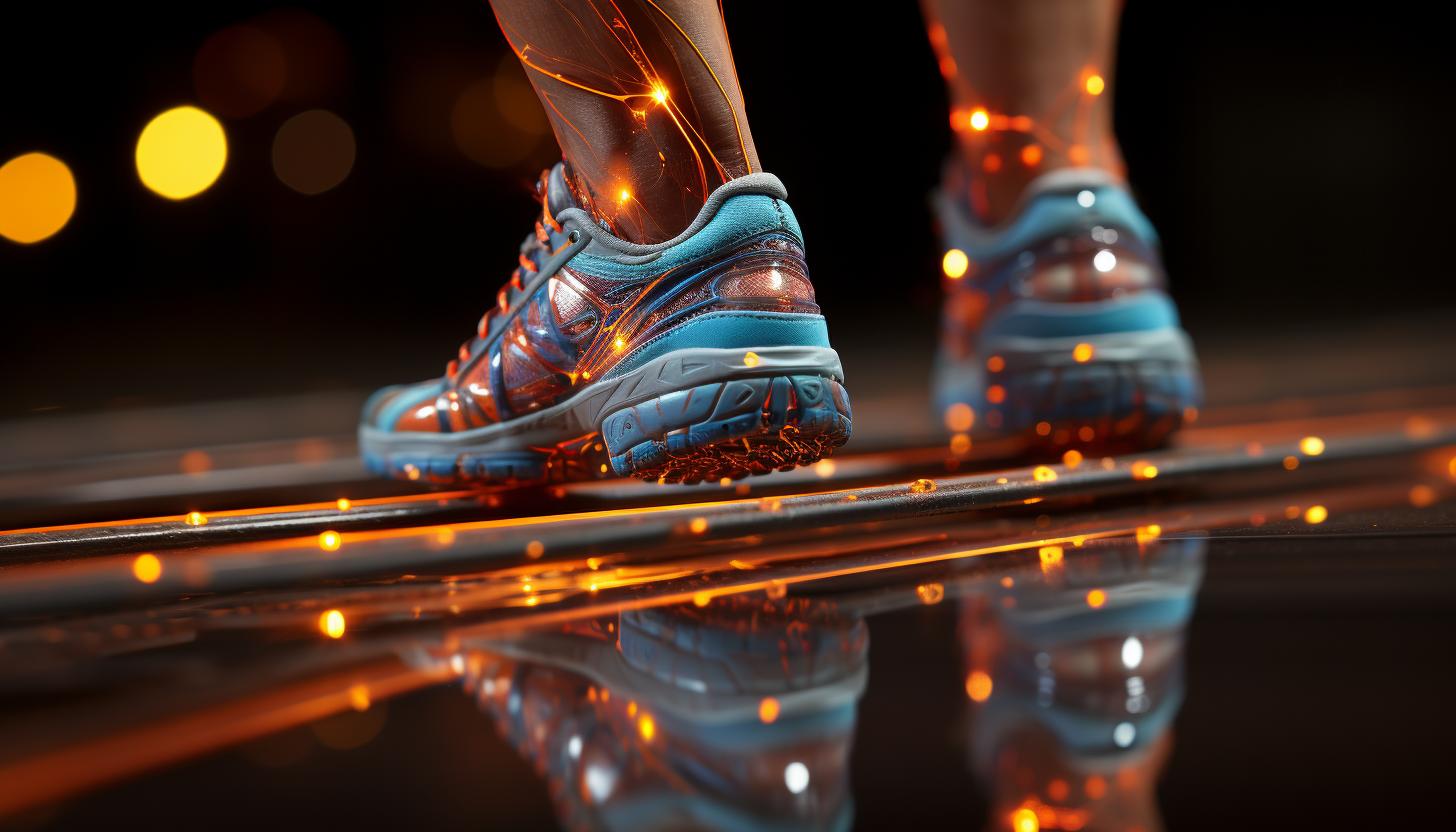
If you experience discomfort in your ankles or knees when running, it may be a sign of overpronation. Overpronation occurs when your foot rolls inward excessively during the gait cycle. This can cause misalignment and lead to various symptoms.
Here are some common symptoms of overpronation:
– Pain in the inside of your ankle or knee
– Flat feet or fallen arches
– Ankle instability
– Shin splints
Now that you recognize these symptoms, it’s important to understand the causes and seek appropriate treatment for overpronation. The main causes of overpronation include weak ankle muscles, excessive body weight, repetitive impact on hard surfaces, and certain structural abnormalities in the feet.
Treatment for overpronation focuses on providing support and stability to the feet. Here are some effective methods:
– Wearing motion control or stability shoes with proper arch support.
– Using orthotic inserts to correct foot alignment.
– Strengthening exercises for the ankles and lower leg muscles.
– Avoiding high-heeled shoes and choosing footwear with cushioning.
Assessing Your Foot Type
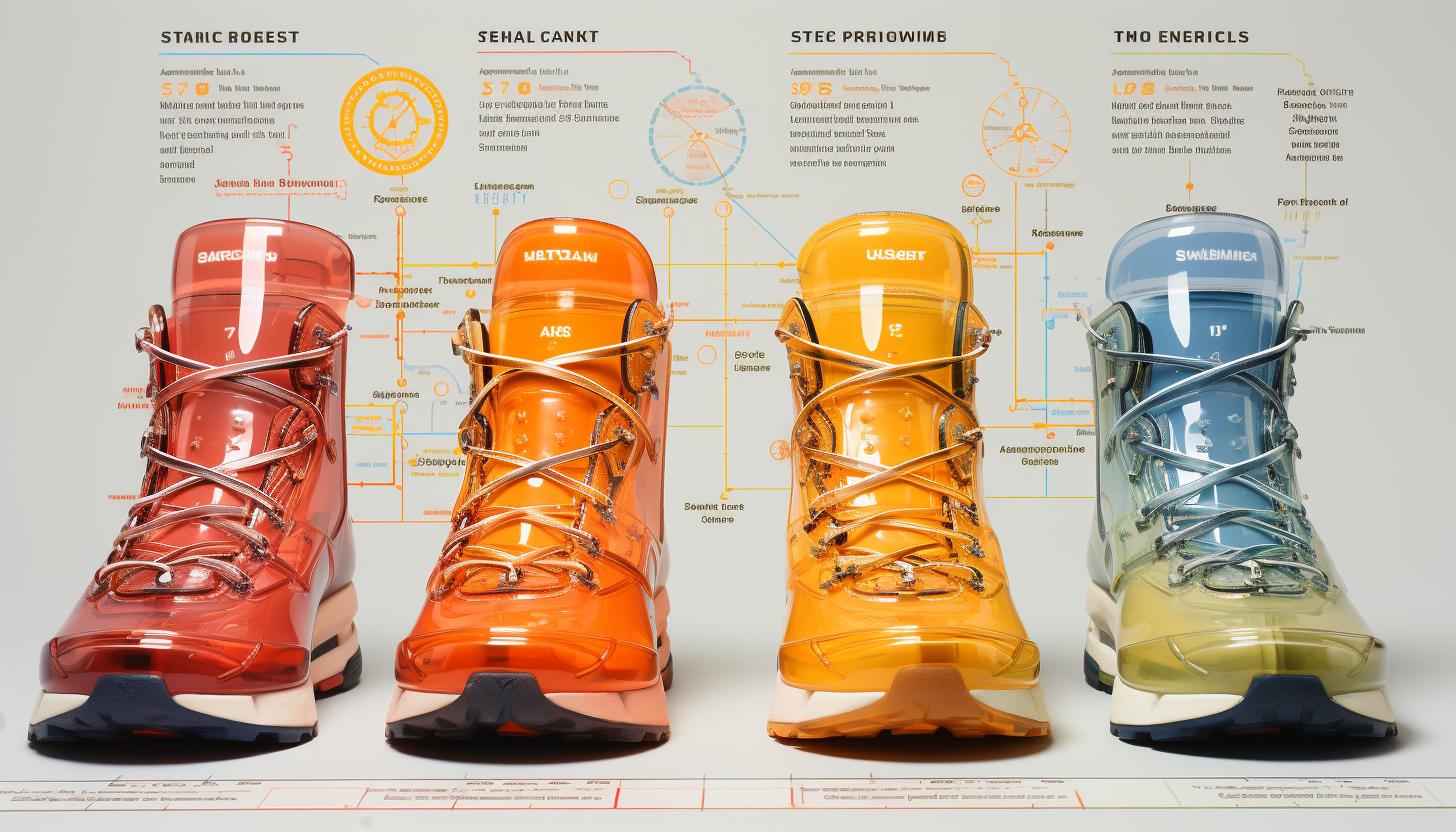
Once you recognize the common symptoms, it’s important to assess your foot type to determine the appropriate treatment for any misalignment. One way to do this is through a gait analysis. During a gait analysis, a trained professional will observe and analyze how your feet and legs move while walking or running. This can help identify any issues with pronation control.
Pronation refers to the natural inward roll of the foot as it strikes the ground during each step. Overpronation occurs when there is an excessive inward roll, which can lead to various foot problems such as plantar fasciitis, shin splints, or knee pain. By assessing your foot type, you can determine if you have normal pronation, underpronation (also known as supination), or overpronation.
To assess your foot type, start by examining the wear pattern on your current shoes. If you notice significant wear on the inner edge of the sole, it may indicate overpronation. You can also perform a wet test by wetting your feet and standing on a piece of paper. The shape that appears can also provide clues about your foot type.
Once you know your foot type and whether you have overpronation, it becomes easier to find suitable running shoes with proper pronation control features. These shoes are designed specifically to support and stabilize the feet during running by providing additional arch support and cushioning in key areas.
Remember that everyone’s feet are unique, so seeking guidance from a knowledgeable shoe specialist or podiatrist is highly recommended for an accurate assessment of your foot type and finding footwear that suits your needs best.
Features to Look for in Running Shoes for Overpronation
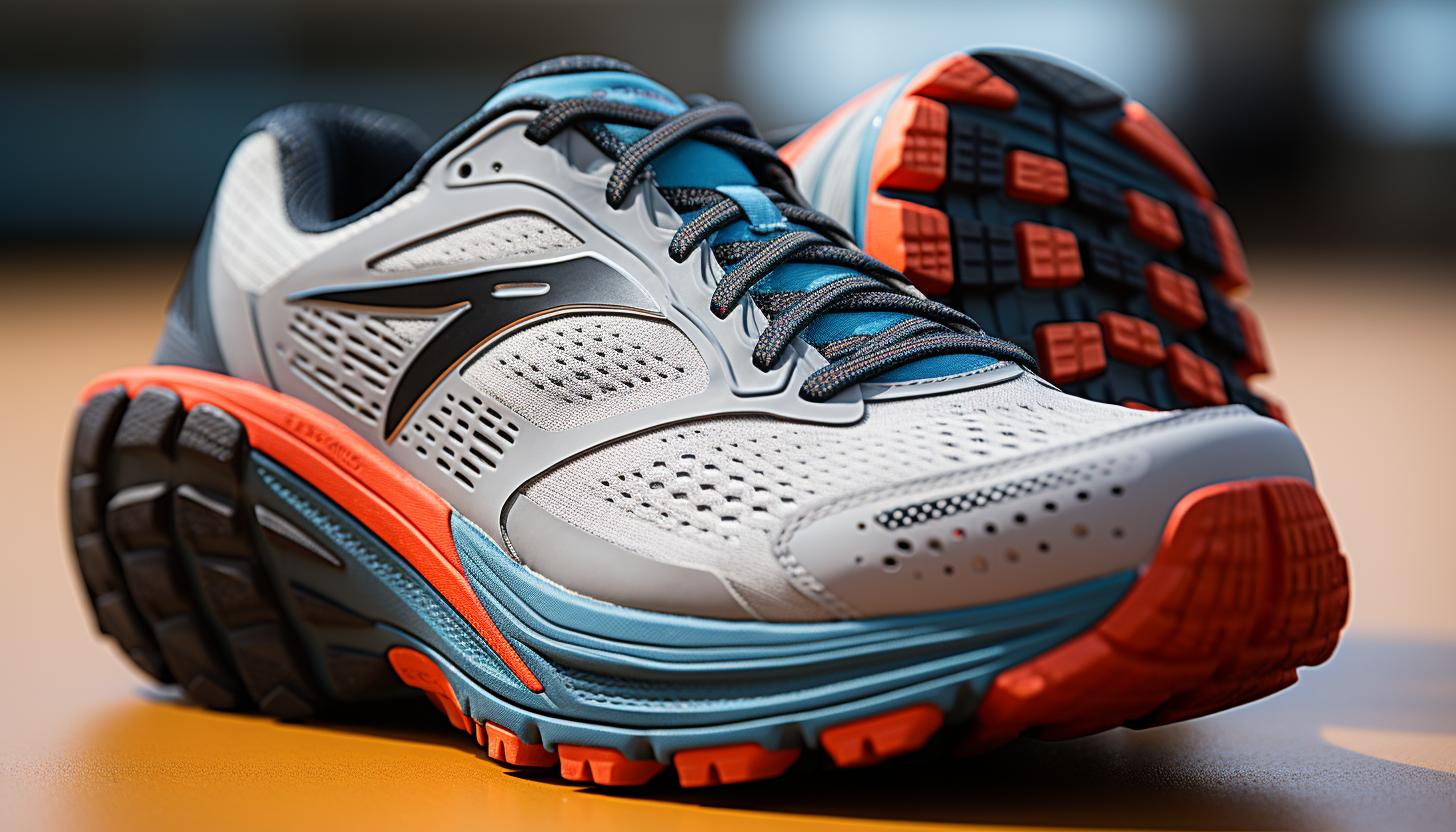
When selecting running footwear, you should prioritize shoes with stability features that can help address your overpronation. Overpronation occurs when the foot rolls inward excessively during the gait cycle, putting extra stress on the arch and causing potential injuries.
To find the perfect fit for your overpronating feet, look for these key features in running shoes:
– Supportive cushioning: Look for shoes that offer ample cushioning to absorb impact and provide support to your feet. This will help alleviate any discomfort caused by overpronation.
– Motion control: Opt for shoes with motion control features such as a firm midsole or a supportive heel counter. These features work together to prevent excessive inward rolling of the foot.
– Arch support: Shoes with proper arch support can help distribute weight evenly across your feet and reduce strain on the arch area.
– Heel stability: Look for shoes that have a sturdy heel counter, which provides additional stability and helps prevent your foot from rolling inward.
Tips for Finding the Perfect Fit
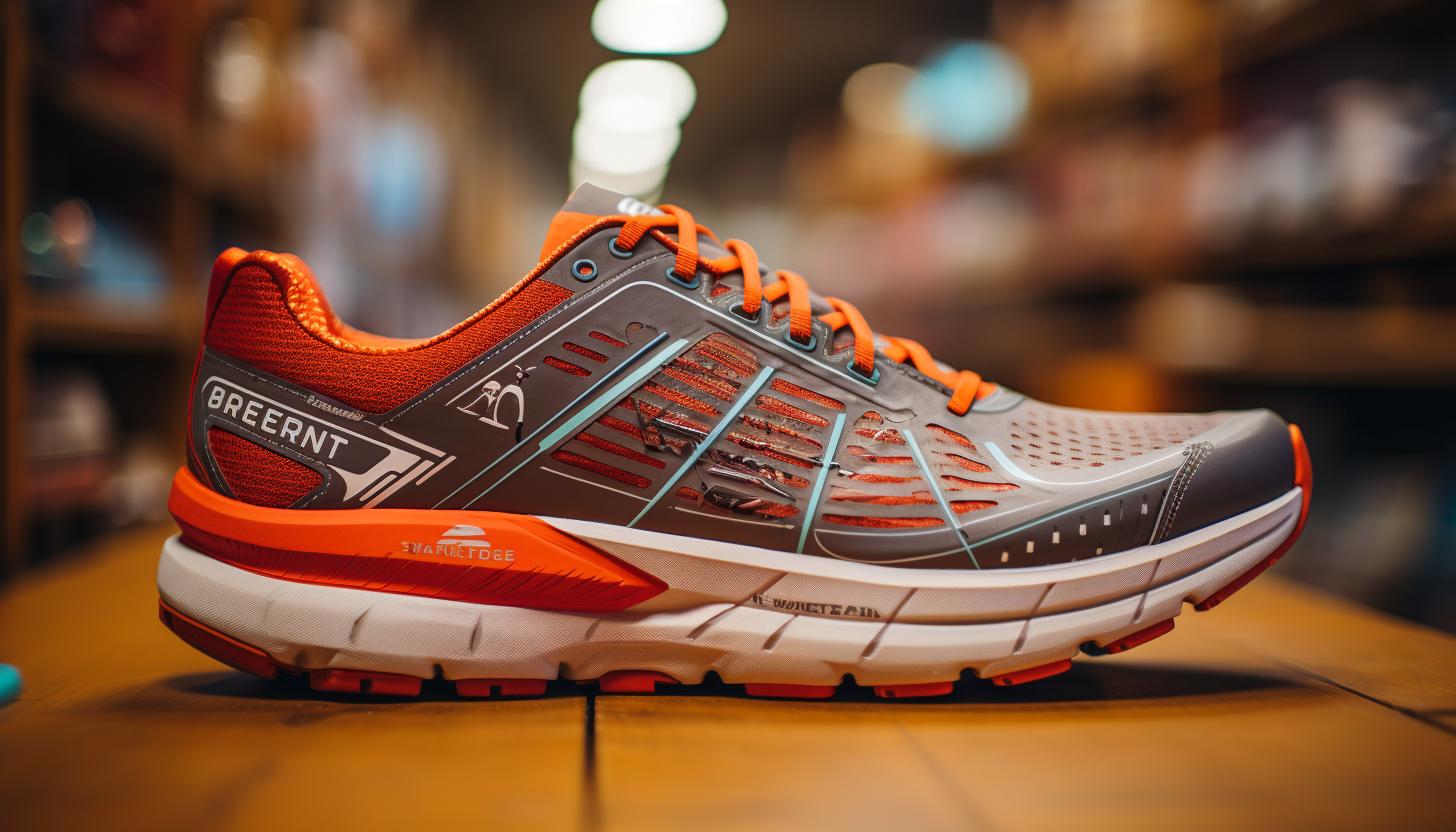
To ensure a comfortable and supportive fit, remember to measure your feet accurately before purchasing. Proper shoe sizing is crucial when it comes to finding the perfect running shoes for overpronation. By measuring your feet, you can determine the appropriate size and width that will provide the necessary support and stability for your foot type.
When trying on running shoes, it’s important to consider multiple brands. Each brand has its own unique design and fit, so what works for one person may not work for another. Trying on different brands allows you to find the one that best suits your specific needs.
Here is a table showcasing some popular running shoe brands known for their overpronation support:
| Brand | Support Level | Cushioning |
|---|---|---|
| Nike | High | Moderate |
| Brooks | Moderate | High |
| Asics | High | Moderate-High |
| New Balance | Moderate-High |
e |
Conclusion
Congratulations! You have now reached the end of your journey in finding the perfect running shoes for overpronation. Just like a skilled navigator who successfully charts a course through treacherous waters, you have navigated through the sea of information and options to find your ideal fit.
Armed with knowledge about overpronation and what features to look for in running shoes, you are ready to conquer any road or trail that lies ahead.
Remember, finding the perfect fit is like discovering hidden treasure – it may take time and effort, but the reward is priceless.
So lace up those shoes and embark on your next adventure with confidence!

